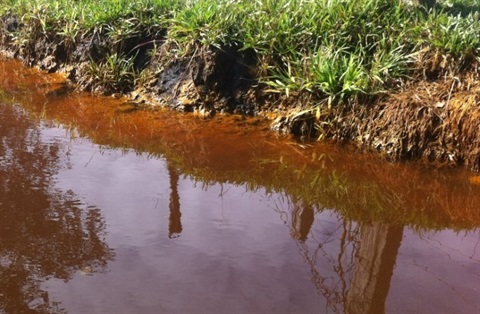Acid sulfate soils

Risk maps Approvals Soil testing
Acid sulfate soils are natural sediments that contain iron sulfides. They are common along the NSW coast.
When disturbed or exposed to air these soils can release acid, damaging built structures and harming or killing animals and plants.
One tonne of iron sulfides can produce about 1.5 tonnes of sulfuric acid when oxidised. Significant fish kills can occur when sulfuric acid is washed into waterways.
Various techniques are used to deal with acid sulfate soil disturbances to make sure acidic discharges are not produced.
Generally, soil samples are taken, the acid generating potential of the soil is calculated and the soil neutralised with agricultural lime to prevent low pH discharges.
Read the Acid Sulfate Soils Manual(PDF, 445KB) to guide you with your management plan.
Apply: Acid sulfate soil management plan for minor works
Risk maps
Acid sulfate soil risk maps are available to identify potential acid sulfate areas:
Consent and approval
Common activities such as cropping, drainage works and construction can trigger acid sulfate soils to oxidise and produce acid.
Works need to be undertaken with extreme caution and in consultation with relevant authorities.
When any landform alteration may result in the disturbance of acid sulfate soil, refer to the:
Written approvals are required from Council in most cases before soils are disturbed.
Council’s Environmental Health team and Duty Planners can provide advice about acid sulfate soil assessment and management.
Before starting any work, call us on 02 6670 2400 to see if any approvals are required.
Apply: Acid sulfate soil management plan for minor works
Soil testing
See Tweed Laboratory Centre to find out what testing is available and how to submit a sample.
Further information